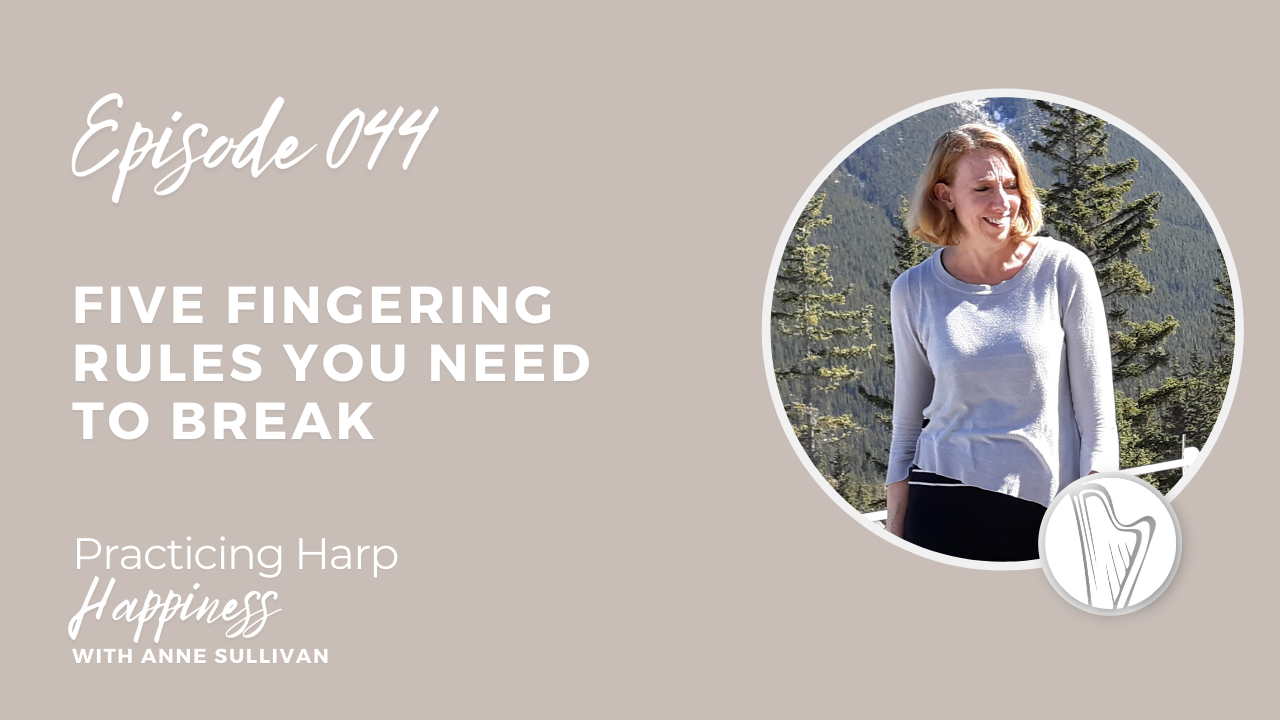#044: Five Fingering Rules You Need to Break

Ask a group of harpists what the hardest part of playing the harp is and you’ll get a lot of different answers: the technique, playing hands together, reading the notes, playing chords, putting on a new string, or maybe even moving the harp. Every harpist has his or her own bugaboo, a particular challenge in their playing.
But we all agree that one of the trickiest parts of playing the harp is the fingering.
From the first day we started the harp it was impressed on us that we need to follow the printed fingering. Placing our fingers accurately and in the right order - all at once or one at a time - helps us battle gravity and stay physically connected to the strings. I like to think of us as musical acrobats - only without the death-defying aspect. So much of what our instrument demands of our technique requires us to be airborne. We have to lift our hands to prolong a sound, to relax our hand, to move from one octave to another. And unlike pianists, we are working against gravity, holding our hands and arms in the air all the time we play.
So our fingering is important. And learning the finger patterns that we play most often is important too. And if you are a harpist who has been following the fingering in your music, you get your gold star.
But there’s a next level of fingering, and you might never have been told about it. I can just about guarantee that you’ve had glimpses of it. Your first glimpse may have come when you began to encounter more advanced music that didn’t have the fingering written in. Perhaps you have noticed that you need less fingering written into your music as you have progressed in your playing.
Today I want to reveal to you some of the secrets of “next level” fingering. Fear not -those secrets aren’t new patterns you need to practice. They are different ways of working with fingering, ways that make use of the technique you have developed since those first days you played the harp. Remember those days? Your playing has grown a lot since then, and so should your fingering habits. We are going to look at five of the basic rules you were taught about fingering and show you how to break them and why you absolutely should. Or looking at it another way, why hanging on to them will cost you practice time and possibly keep you from getting to that next level of playing.
Before we dig into this more deeply, I want to share this thought from Rick Wakeman, the keyboard player of the rock band YES. Rick wasn’t talking about harp fingering certainly, but his words are still a great start to our discussion.
“I always say that it's about breaking the rules. But the secret of breaking rules in a way that works is understanding what the rules are in the first place.”
So get ready to break some rules!
Links to things I think you might be interested in that were mentioned in the podcast episode:
- Four Weeks to Finger Freedom course
- The Failsafe Fix For Fast Flexible Fingers blog post
- Harpmastery.com
Get involved in the show! Send your questions for future podcast episodes to me at [email protected]

